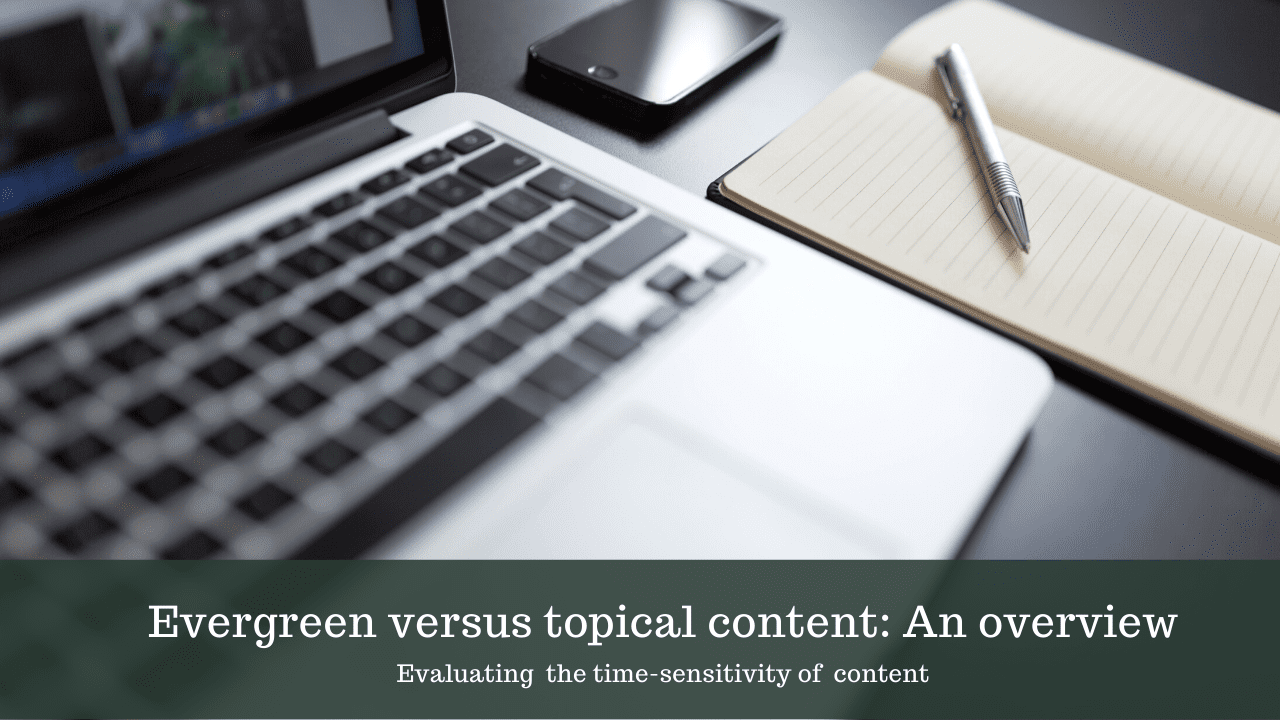When evaluating the time sensitivity of the content that you create, there are two major categories. Content will either be topical or evergreen. You should always include both categories in your marketing strategy, as each has its ideal purpose.
At the most basic level, evergreen content is relevant for a long time while topical content has a shorter period of relevancy. To better understand their uses, however, you must take a closer look at their differences.
Evergreen content

As mentioned, evergreen content is distinguished by the fact that it stays relevant even after significant time has passed following its publication.
Two common examples of evergreen content are instructional content, such as how to make a blog post, and listicles, such as the top five companies in a given category. Other examples include product reviews, tips, and certain types of videos.
An evergreen blog post or article can answer frequently asked questions. It could provide advice and explanations. Or it could explain industry concepts that some readers may have trouble understanding.
Designed to drive traffic continually
Because evergreen content is designed to be relevant for a long time, it should ideally drive traffic to your website continually over that extended period. Its existence will also boost your search engine rankings, further positioning your company as an authority in the industry. To reap those particular benefits, you will need to incorporate the correct keywords into your evergreen content and optimise for SEO.
It still needs to be updated
Just because evergreen content should last for a long time, that does not mean that you get to create it and leave it alone. You will still need to review the articles regularly in the future to ensure all information is up-to-date. Make updates to the articles in the future, with the updated date listed, if necessary.
You can repurpose it
Because the information contained in evergreen content is relevant for a long period, you can also easily repurpose it in the future. For example, you could combine multiple evergreen blog posts on similar topics into an evergreen long-form guide.
Here’s how you can keep your content evergreen
Topical content

We have already established that topical content is more time-sensitive and is mostly relevant just at the given moment.
Newsjacking, the term for writing about popular news stories, is a common example of topical content. Another example is stories about current trends, such as those in fashion or your industry. Other examples of topical content include those that focus on upcoming events, like New Year’s, the Olympics, or annual reports. Statistics are another good example of topical content since they are unlikely to be relevant for long.
Designed for a spike in traffic
The goal with your topical content is to gain a spike in views on your website. You want the content to have a large number of views at first, while it is still relevant. You expect this to taper off soon, at which point you will create another spike with a new piece of topical content.
Read how we can make stories more newsworthy
You need both
It is common to wonder why you need both evergreen and topical content. After all, why is topical content necessary if evergreen content lasts? There are actually a few important reasons for this. One of them is the spike in views that topical content should create. Regularly publishing topical content leads to consistent spikes, benefiting your brand and boosting your potential leads.
Additionally, by utilising both strategies together, you can show that your brand is a thought leader. You can show those who visit your website that you are knowledgeable about the elements of the industry that will never change, such as how to complete relevant tasks. You also show that you remain up-to-date with relevant industry advances and events. Clients always want to work with companies that are aware of the latest methods and products, as these tend to lead to the best results.
Want to learn more about how content writing ties into your brand’s PR strategy? Drop us a line at hello@syncpr.co


Yes.. I would like to learn more on how content-writing ties into my brand’s PR strategy.
Thank you.